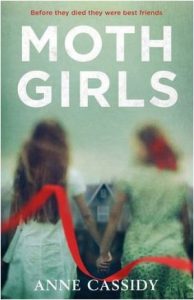A library borrow 🙂
About the author (from official bio):
Jodi Picoult is the author of twenty-four internationally bestselling novels, including My Sister’s Keeper, and The Storyteller. She has also co-written two YA books with her daughter Samantha van Leer.
She studied creative writing with Mary Morris at Princeton, and had two short stories published in Seventeen magazine while still a student. Realism – and a profound desire to be able to pay the rent – led her to a series of different jobs after graduation, and she worked as a Wall Street technical writer, a copywriter, a textbook editor and an 8th grade English teacher before entering Harvard to pursue a master’s in education. She married Tim Van Leer, whom she had known at Princeton, and it was while she was pregnant with her first child that she wrote her first novel, Songs of the Humpback Whale.
Four of her books have been made into TV movies and My Sister’s Keeper was a cinema release. She has received numerous awards and now lives in New Hampshire with her husband, three children and a menagerie of animals.
About the book:
Jenna Metcalf was with her mother, Alice, the night she disappeared, but she remembers nothing about it – and nor does her father, as far as she can tell. He is in an asylum and unable to help her understand what happened. Now, Jenna lives with her grandmother, who finds it too painful to talk about what happened, and the world of the elephant sanctuary where she was raised is just a memory.
Ten years on, Jenna is the only one who still seems to care; to wonder and worry, trying to fit the pieces together. With no family to help her, she must get some unlikely helpers on-side in the shape of a washed-up psychic, Serenity, and the police officer who has done all he can to put the night of Jenna’s mother’s disappearance behind him.
What I liked:
I loved the way the story alternates between the viewpoints of Alice, Jenna, Serenity and Virgil, and merged the lessons learned about elephants, memory, loss and grieving into the story that surrounds these characters. As with all the Jodi Picoult books I’ve read, the story is clever, although the pace is a little slow to start with. However, the tension is maintained and the language is understatedly elegant.
Every main character had a strongly individual voice and I became completely engrossed in the story of each of them, hoping passionately for a happy outcome for them all. The information about elephants was fascinating and integral to the plot points (although see below).
And finally… the twist. It made me stop, go back a little and read on again, just to make sure I’d understood. It’s not a massively original idea, but I didn’t expect it in this story – or in any JP novel; I thought I knew exactly what I was getting in terms of the book’s quest, so it was a surprise.
What I wasn’t so keen on:
Not much, although Virgil was a little stereotypical as the ‘damaged cop’ who drinks too much and has let himself go, and there were one or two points where the book felt a teensy bit too preachy and intense on the subject of elephants and how they’re treated, particularly in the first half of the book. I think the editor needed to be a little more zealous here.
I suspect there will be people out there who don’t like the ending of this book, feeling it’s much less grounded in normal human lives than a usual Picoult wrap-up (I can’t explain in more detail without spoilers!). I thought it was clever, though, and found it believable in the context of a belief system I don’t believe in – i.e. it’s no different, for me, than reading a book in which a character is healed by their belief in Christianity. Just because I don’t believe that can happen, doesn’t mean I can’t read a book in which it supposedly does.
Overall, for me, a big fat winner! 🙂








